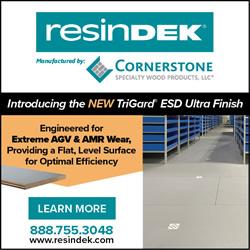3D Systems and EksoBionics Debut 3D Printed Hybrid Exoskeleton Robotic Suit
3D Systems today announced that it recently debuted the first ever 3D printed hybrid Exoskeleton robotic suit in collaboration with EksoBionics at a Singularity University-hosted event in Budapest.
Amanda Boxtel acted as the test pilot for this venture. On Feb. 27, 1992, Amanda Boxtel took a fall while skiing in Aspen, CO that culminated in a freak somersault.
The accident left her paralyzed from the waist down. At the hospital, Boxtel's doctor told her she would never walk again. Despite her paralysis, the hybrid 3D printed robotic suit enabled Amanda to stand tall and walk throughout Budapest.
Amanda Boxtel with 3D Printed Ekso-Suit
"After years of dreaming about it, I am deeply grateful and thrilled to be making history by walking tall in the first ever 3D printed Ekso-Suit, made specifically for me," said Amanda Boxtel, referencing the custom tailored 3D printed Ekso-Suit that was created by 3DS' designers. To obtain the perfect fit for Amanda, our designers used 3D scanning to digitize the contours of Amanda's thighs, shins and spine and create a personalized three-dimensional base to inform the shape of the required assemblies. Sophisticated mechanical actuators and controls, manufactured and provided by Ekso Bionics, were then integrated with the more fluid components that were 3D printed from the customized scans to create the first ever bespoke suit. "This project represents the triumph of human creativity and technology that converged to restore my authentic functionality in a stunningly beautiful, fashionable and organic design," Boxtel said.
"I believe that the most beautiful and functional designs have already been patented by nature, and inspired by Amanda's incredible spirit, we were able to harness nature's beauty with 3D printed functionality and freedom of creation to allow her body and spirit to soar," said Avi Reichental, President and CEO of 3DS. "3DS has long been a pioneer in patient-specific devices, integrating our cutting-edge 3D capabilities with robotics to better serve humanity opens new and unimaginable frontiers."
3DS' patient-specific devices currently serve a growing field of medical applications to improve surgical outcomes and quality of care, including preoperative surgery, surgical drill and saw guides, dentistry and orthodontics.
Learn more about 3D Systems' commitment to manufacturing the future today at www.3dsystems.com.
About 3D Systems Corporation
3D Systems is a leading provider of 3D printing centric design-to-manufacturing solutions including 3D printers, print materials and cloud sourced on-demand custom parts for professionals and consumers alike in materials including plastics, metals, ceramics and edibles. The company also provides integrated 3D scan-based design, freeform modeling and inspection tools. Its products and services replace and complement traditional methods and reduce the time and cost of designing new products by printing real parts directly from digital input. These solutions are used to rapidly design, create, communicate, prototype or produce real parts, empowering customers to manufacture the future.
Leadership Through Innovation and Technology
*3DS invented 3D printing with its Stereolithography (SLA) printer and was the first to commercialize it in 1989.
*3DS invented Selective Laser Sintering (SLS) printing and was the first to commercialize it in 1992.
*3DS invented the Color-Jet-Printing (CJP) class of 3D printers and was the first to commercialize 3D powder-based systems in 1994.
*3DS invented Multi-Jet-Printing (MJP) printers and was the first to commercialize it in 1996.
Today its comprehensive range of 3D printers is the industry's benchmark for production-grade manufacturing in aerospace, automotive, patient specific medical device and a variety of consumer, electronic and fashion accessories.
Source: http://www.3dsystems.com
Featured Product

ResinDek® TRIGARD® ESD ULTRA FOR HIGH-TRAFFIC ROBOTIC APPLICATIONS
To maximize the productivity of an autonomous mobile robot (AMR) or automatic guided vehicle (AGV) deployment, it's critical to create the optimal environment that allows the vehicles to perform at their peak. For that reason, Cornerstone Specialty Wood Products, LLC® (www.resindek.com) created the TriGard® ESD Ultra finish for its ResinDek® engineered flooring panels. The TriGard ESD Ultra finish is ideal for high-traffic robotic applications characterized by highly repetitive movement patterns and defined travel paths.
